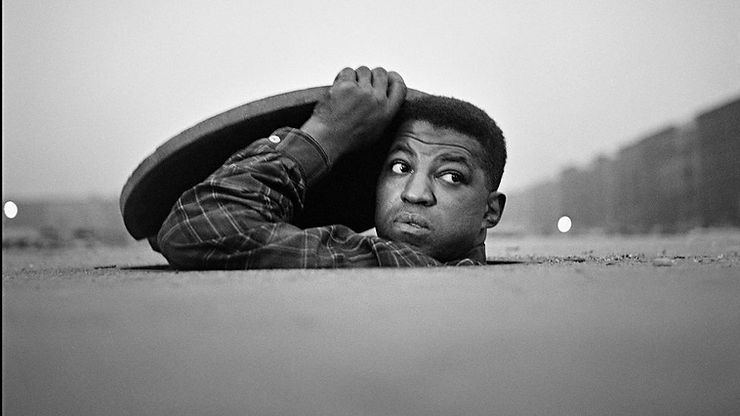By: Eric Weinberg
Parks crept down the dirty, foul street in 1947 with a camera in hand and sees two skinny children, half-naked, holding a tattered doll between them and sitting against the wall of a broken-down, dirty apartment complex. Parks bends over, asking if he can take a picture of the two. They give him their consent in small weak voices, and Gordon Parks snaps the picture. He thanks the two and continues walking across the cracked sidewalk.
Gordon Parks was a photographer, film director, and music composer from the 1940s through the ‘70s. He is most celebrated for his photojournalism and photo-essays that capture the harsh side of America: the poverty, racism, and tough urban life that was abundant in the 20th century. He traveled all around America, using his camera as a flashlight to reveal what goes on outside the sprawling, red-brick arched doorway houses of the rich. He used his camera to fight racial injustice. He did not use a knife or gun to do this, but he used his camera. He was a humble man who grew up on a low income and knew exactly what this rough life was like. He once said, “The subject matter is so much more important than the photographer.”
Parks grew up in Fort Scott, Kansas, in the country. His father was a farmer and had 15 children with his wife. Parks grew up under segregation and went to segregated schools except for high school, where he was highly limited in school activities, not being able to participate in any clubs or sports teams. After his mother’s death, he was sent to live with a sister until he was eventually forced out onto the street. At 15 he began working odd jobs here and there.
Parks was struck by sad photos of his time he would see in newspapers and magazines. He became very fascinated with photography throughout his early childhood. Later on, he would buy his first camera and, eventually, in 1941 started his career of photographing the tough life of poor and black Americans. He chronicled St. Paul’s ghetto, a magnificent piece of work that would help him find jobs later. About 7 years later, he became the first African American worker for Life Magazine. He began to write photo essays and was a full-time photojournalist. Parks was also a talented musician and composed a few pieces as well as directed the 1971 film Shaft, the first African American action film.
Parks grew to be one of the United States’ most celebrated photographers. Throughout his career, he would capture comprehendible cruelties in society and used his photos as a means of protest against racism and poverty. He said he used his camera as a light to shine on what would otherwise go unnoticed. Dr. Wayne A. I Frederick, president of Howard University, summarized his life by writing, “Mr. Parks was a trailblazer whose documentation of the lived experiences of African Americans, especially during the civil rights period, inspired empathy, encouraged cultural and political criticism, and sparked activism among those who viewed his work.” Let us appreciate the importance of Parks’ images and his amazing legacy.











